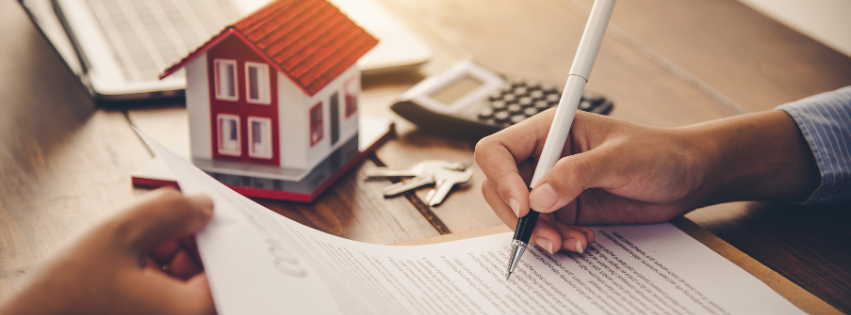
Buying a property through a mortgage loan – Part 2
Getting your own home, definitely, is one of the most important moments for the majority of the population.
No matter whether the property will be for personal use or for investment purposes, financing is needed, which is often unaffordable for buyers.
Therefore, many of them resort to taking out a mortgage loan.
This is a difficult and complex process.
In the first part of the series ‘Buying a property through a mortgage loan’ , we started with:
– Determination of the purchase budget;
– Choosing a bank;
– Pre-approval for a mortgage loan;
– Pre-approval documents.
In the second part of the material, we will introduce you to the other stages.
Conclusion of a preliminary contract
After the market valuation has been prepared and we have agreed on all the parameters of the purchase and sale, a preliminary contract must be concluded.
The preliminary contract is the most responsible step for the purchase and sale, which binds both the buyer and the seller to the transaction.
Therefore, before signing it, we should make sure of the ‘legal purity’ of the property, which will be done either by the broker protecting the interest of the buyer or a lawyer hired for this purpose.
Most banks require a preliminary contract when approving a mortgage loan, because it describes the parameters of the future transaction, which will be financed by the bank.
It is also important for the buyer to comply with the term of the transaction with the bank’s ability to approve the loan within this period, but only after the seller submits the necessary documents for the property.

Mortgage loan agreement
After the preliminary contract has been signed, all documents related to the desired property have been submitted to the bank, it has approved them and there is a final opinion on the approved parameters of the loan, there is also an opinion from the notary, it is time to sign the mortgage loan agreement itself with the bank.
This can happen a few days or just before the notarial transaction.
The mortgage loan agreement describes the relationship between the bank and the borrower-buyer.
Depending on whether the entire amount of the loan is provided only and specifically for the purchase of the property or there is also a part that is for repairs, for example, the mortgage can be legal or respectively contractual.
If the loan amount is only for the purchase of the property and the borrower is also the sole owner, the mortgage is legal, it is established only with a request from the bank, as this is regulated by law and in the mortgage loan agreement.
Notarial transfer
Notarial transfer is a routine procedure attended by buyers, sellers and a representative of the creditor bank, and notarial deeds are signed.
After the notarial deeds are signed, they are entered in the Property Register of the Registry Agency.
The creditor bank pays the agreed amount to the seller only when the property is registered with the Registry Agency and the mortgage of the bank is first in line (unless otherwise agreed, e.g. the mortgage of the seller’s bank must be deleted).
However, taking possession of the property is not mandatory on the same day.
In practice, the possession of the property is transferred when the entire amount has been paid, incl.
and that of the loan (of course, unless otherwise agreed).
Loan Utilization
After the transaction is registered with the Registry Agency and a certificate of encumbrances is presented to the bank, together with the notary deeds, the repayment schedule of the loan is signed and the loan can be utilized, respectively the amount due to the seller can be ordered.
Only after that the possession of the property was handed over.
An important condition for the utilization of the loan is that the property insurance in favor of the bank has entered into force, as well as the life insurance of the borrower, if such is agreed in the terms of the loan agreement.
If, in addition to the purchase of the property, another part is included in the loan (e.g.
for repairs/ after the loan is disbursed, the buyer will be able to dispose of it as well.
Often, the remaining amount for repairs is absorbed in two tranches, and before the second one, an inspection of the property or a new valuation is usually required to assure the creditor bank that the funds have been invested in repair activities.
Transfer of possession
When the amount for the purchase and sale is paid in full to the seller, he is obliged to hand over the possession of the property.
The possession is handed over by signing a handover protocol between the parties, and this protocol describes the condition of the property, furniture (if any), paid bills for consumable expenses and accounts for electricity, water, etc.
Once you are already the owner of the property, you have the obligation to submit applications for the transfer of the accounts for utilities – electricity, water, central heating, gas, etc. at the offices of the respective suppliers. If the home you have purchased will be your main residence, submit a property declaration within two months in a standard form to the municipal office in order to reduce the amount of the Buildings Tax.
You can read more detailed information in our article on the procedures after buying a property.
Tips
• If you use the services of a real estate broker at the beginning of the process, research and choose one that will protect your interest in the transaction.
• To feel calm and secure about the approval of a mortgage loan, use the services of an experienced credit consultant.
We at Organization Focus work with all banks and will help you choose the best solution for you!
• Choose informed!
It’s important to do your research and know what you want and what you’re aiming for.
Here are a few more articles that would be useful to you on the topic:


